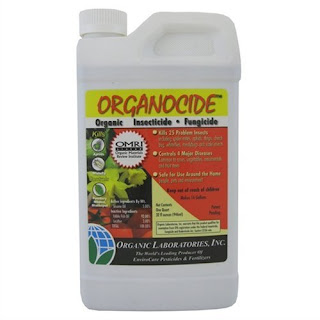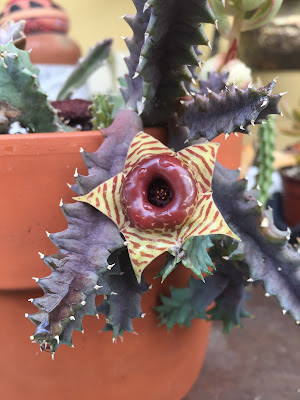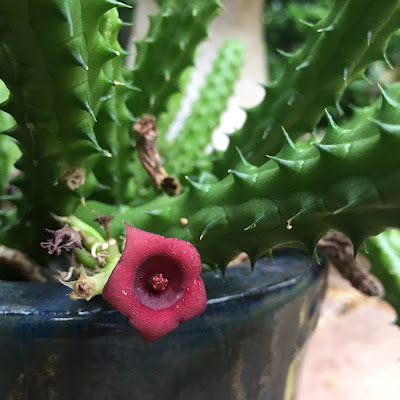How to Grow and Care for Huernia Succulents
By far one of my favorite succulents of all, the Huernia genus of succulents is of the family Apocynaceae and subfamily Asclepiadoideae. Huernia succulents are closely related to my other favorite succulent family, Stapelias. Basically, they all have one fascinating thing in common - breathtaking flowers! However, unlike Stapelia flowers, I have yet to encounter a Huernia flower that stinks like a rotting dumpster, though some probably do. But please, don't let that little tidbit deter you from falling in love too, I assure you the overall joy that Stapelias and Huernias bring far outweighs that small bad trait. Besides, it's an evolutionary miracle aimed at achieving pollination, more on that later in this post.
Huernia succulents are low growing succulents native to the deserts of Southern and East Africa, all the way to Arabia, and are thus found growing mostly at the base of other plants in partial sun to bright light/shade. Therefore, in order to maintain their healthy succulent sage green color, these beauties prefer bright light to partial shade, whereas in harsh full sun they can slightly shrivel and turn colors ranging from grey to red to bright purple - as a means of protection. Extended periods of exposure to full sun can be harmful, causing parts of the plant to dry up completely and die. On the other hand, too little light and Huernias grow weak and thin, leading to decreased flower production in the blooming periods of late Spring to late Fall.
As far as ideal growing temperatures go, 50-80 degrees Fahrenheit is best, however here in Miami we get temperatures well above 80 degrees for most of the year, which is why finding a spot with bright light or partial sun is so important. I have found that a few hours of morning sun is best, making sure that the plant is shaded during the harsh afternoon sun. After some reading, I've found that Huernia succulents can tolerate temperatures as low as 40 degrees Fahrenheit while dormant during the Winter.Huernia succulents are low growing succulents native to the deserts of Southern and East Africa, all the way to Arabia, and are thus found growing mostly at the base of other plants in partial sun to bright light/shade. Therefore, in order to maintain their healthy succulent sage green color, these beauties prefer bright light to partial shade, whereas in harsh full sun they can slightly shrivel and turn colors ranging from grey to red to bright purple - as a means of protection. Extended periods of exposure to full sun can be harmful, causing parts of the plant to dry up completely and die. On the other hand, too little light and Huernias grow weak and thin, leading to decreased flower production in the blooming periods of late Spring to late Fall.
 |
| Huernia zebrina succulent flowers blooming |
When it comes to watering, be very careful! Huernias can easily rot if you water them too much, like most succulents they hate wet soggy roots for extended periods of time. Because these succulents have shallow roots, I suggest planting them in small shallow pots, and even better if the pot is made of clay/terracotta as this helps absorb water and dry the soil faster. But watering can be tricky too, because in the summer when temperatures get really hot, particularly here in Miami (and if you have your plant in a shallow clay pot), Huernias can dry out fast and can weaken and shrivel without enough water. Make sure to water thoroughly once a week during hot months, ideally in the early morning, but also in the late afternoon if you have no other choice. If you water during a time when the plant is receiving sunlight, not only will the plant roots steam up inside the pot (think sauna-like conditions), but the magnification of the sun from the water can easily burn and disfigure the plant - I learned this the hard way.
Always make sure to plant succulents and cacti (and any plant really) in a container with a drainage hole, I cannot stress this enough! No drainage hole means water will sit at the bottom of the container for a long time before drying up and most likely rot the roots of the plant. Also, when planting succulents it's very important to add a layer of gravel or small rocks to the bottom of the container before adding soil and the plant, this is to increase aeration and drainage, and especially so the roots can sit above the water draining at the bottom of the pot.
Fertilization should be done during the growing season, not during Winter dormancy. I like to use Shultz Cactus Plus Fertilizer, which requires you dilute seven drops per quart of water each time you water, or as often as you'd like. However, I recently found a cactus fertilizer by Miracle-Gro while browsing my local Home Depot that comes in a small bottle with a pump, which can be applied directly to the soil or added to water, every two weeks. I have yet to use the Miracle-Gro fertilizer, I'll let you know what I think in a follow up post.
And now, for pests.... Any gardener knows that pests are an unfortunate reality in gardening! And like with most succulents, one of the biggest enemies to Huernias is mealy bugs. Mealy bugs are creepy little white bugs that develop a cotton-like growth on their backs once they hunker down to do some damage. And by damage, I mean sucking the sap (basically the chlorophyll) right out of your precious succulents. Mealy bugs can strike at any time, but I've noticed they like to prey on weak succulents - such as those that are not getting enough light and those that are battling root rot and slowly dying from within. You can spot mealy bugs nesting around the underside and base of succulent leaves - where they sprout from the stem, and especially in and around the rosette. The first thing you must definitely do after finding mealy bugs in your garden is thoroughly inspect all your plants and quarantine any that you find these bugs on.
Next, you can kill these jerks by first wiping them off carefully with a Q-tip, even better if you dip the Q-tip in a little bit of rubbing alcohol or soap diluted in water (about 50/50 ratio). After you do your best to get most of them off, spray the entire plant down with this same solution of water or soap and water, which will suffocate the rest. Make sure to do this out of direct sun, move the plant to shade and let it stay there for a few days, if not the sun will burn it to a crisp. I've also used an organic pesticide/fungicide called Organocide, which works really well but stinks to high heaven like fish oil (which I imagine is likely the main ingredient since it's an effective organic method of suffocating the little suckers). This solution will do the job well, but it will leave an oily discoloring on your succulents, so make sure to keep them out of direct sun while in the treatment/healing period, and then give them a good spray down with the hose a week or so later to clean them off:
Now, for the stinky flowers... Like I said above, I have yet to acquire a Huernia succulent that puts out stinky flowers like the Stapelias, but far be it from me to declare that all Huernias in the genus are exempt from this trait. You see, most pollinators of these flowers - primarily flies and gnats - are drawn to colors and odors that mimic decaying meat, animal manures, and other carrion. And since Huernia, Stapelia, and Orbea succulents (just to name a few) put out gorgeous colorful flowers that often reek of a dead animal, this is where the party's at! I don't mind, the flowers bring me so much joy and fascination that it's a small price to pay. Besides, sometimes you never really smell the foul odor unless you get super close to the flower or if the wind is blowing in the wrong direction, ha! And again, this is an evolutionary miracle of nature, so it's all good.
As for propagation, most succulents propagate very easily from cuttings. Huernia is no different, snap a piece off at the segmented area and just lay it on some soil to grow roots, it's that easy! I love to pop a piece or two in all of my planters so when the blooming season comes I can see these amazing flowers everywhere throughout the garden.
As for propagation, most succulents propagate very easily from cuttings. Huernia is no different, snap a piece off at the segmented area and just lay it on some soil to grow roots, it's that easy! I love to pop a piece or two in all of my planters so when the blooming season comes I can see these amazing flowers everywhere throughout the garden.
How about a brief little anatomy lesson? Just for fun... Before I outline the technical composition of the flower, let me note that the spines along the plant are soft and are nothing like the stiff painful spines of a cactus - they look nasty but they're harmless! Let's use an image of Huernia zebrina below (one of my favorie Huernia succulents!), also known as the Lifesaver plant due to its resemblance to a lifesaver raft, to demonstrate the anatomical parts... The center area of the flower consists of the Inner and Outer Coronas, the red ring in the middle is called the Annulus, and the red and yellow striped petals area is called the Corolla Lobe:
As you can see, the plant above has shriveled a bit and has turned a deep grey-purple color due to too much sun exposure, whereas the image below shows the plant in its prime state of succulent sage green. When the sun shifts positions in the sky with the changing seasons, it's likely you may have to move your planter to make sure it doesn't get too much harsh afternoon sun. Otherwise, if you have your Huernias planted in the ground, make sure to mimic the natural conditions in which it evolved in the deserts - growing under the shade of another plant.
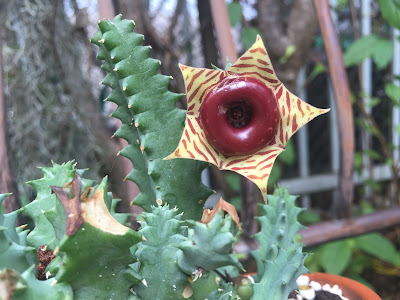 |
| Huernia zebrina Succulent flower |
All of this might seem overwhelming and a bit complicated, but I assure you the best way to let these succulents thrive in your garden is to find a spot they love and let nature take care of the rest! Granted, during extreme periods of heat and drought, which is common here in Miami, its best to get out in your garden and give everything a thorough drink with the hose, just to make sure things don't get too dry. But for the most part, nature does an excellent job of maintaining plants on its own (obviously!) as long as you make sure you plant/place your planter in a habitat conducive to its needs. In this case, find a spot for your Huernia succulents in the shade of a larger plant where it gets plenty of morning sun, afternoon shade, and rain water. If you place your planter on a patio where it does not receive rain water, then you definitely need to tend to its watering needs or else it will dry out.
And now, for a few more images of the various Huernias that I own... They're quite hearty and grow rather quickly wherever you sprinkle them throughout the garden, especially Huernia schneideriana, which is big trailing succulent, it spills out of planters and makes an excellent candidate for head planters like the one below:
Huernia schneideriana Succulent
|
 |
| Huernia schneideriana Succulent flower |
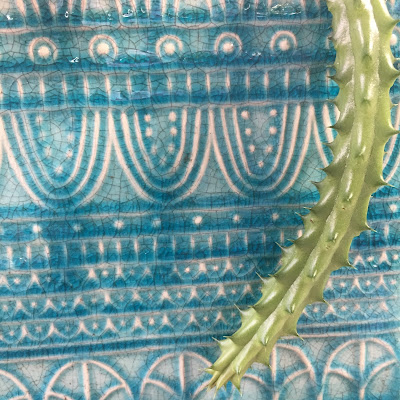 |
| Huernia schneideriana Succulent |
 |
| Huernia 'Pink Eye' |
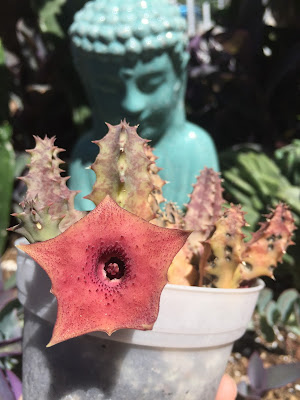 |
| Huernia 'Pink Eye' |
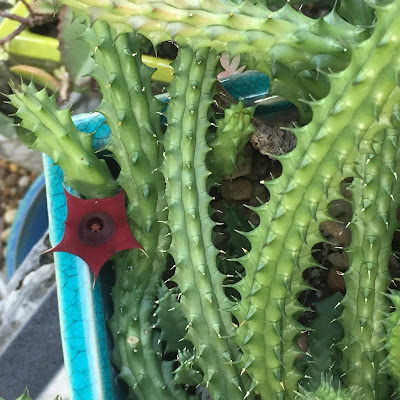 |
| Huernia schneideriana Succulent flower |
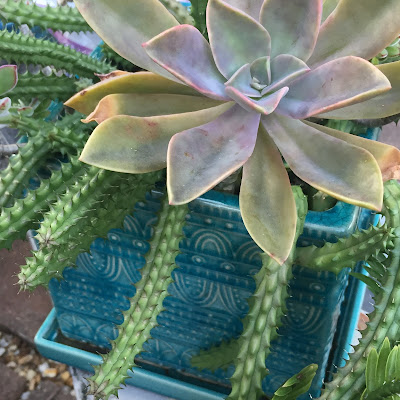 |
| Huernia schneideriana Succulent |
 |
| Huernia schneideriana Succulent flower |
(All photographs in this post are taken by Inspire Bohemia and are protected under copyright, please do not reuse without written permission.)





